formerly eScholarship Editions


|
|
|
|
Your search for
'Art' in subject
found 84 book(s). | Modify Search | Displaying 41 - 60 of 84 book(s) | |
| 41. | 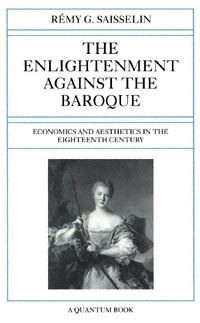 | Title: The Enlightenment against the Baroque: economics and aesthetics in the eighteenth century Author: Saisselin, Rémy G. (Rémy Gilbert) 1925- Published: University of California Press, 1992 Subjects: History | Economics and Business | Popular Culture | Art | Renaissance History Publisher's Description: How do seemingly disparate arenas of Enlightenment philosophy, economic theories, boudoir etiquette, literary styles, and artistic modes coincide in the late eighteenth century? In this poetic essay on the evolution of the idea of luxury and art, Rémy Saisselin uses precise, witty examples to describe the development of our modern taste, ultimately the successor of the more spiritual and grand baroque goût . His analysis both illuminates and distinguishes between eighteenth-century and modern varieties of conspicuous consumption.This persuasive discourse depicts the rise of luxe as an escape from ennui and shows how, for the first time in European history, a large class of wealthy, leisured people emerged to make art, luxury, and the avoidance of boredom its preoccupation. Saisselin provides an original and lucid picture of the first phases in the emergence of a specifically bourgeois taste. [brief] Similar Items |
| 42. | 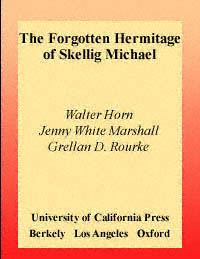 | Title: The forgotten hermitage of Skellig Michael Author: Horn, Walter William 1908- Published: University of California Press, 1990 Subjects: Architecture | Art | Architectural History | Medieval Studies Publisher's Description: This book is a dramatically told and visually stunning account of a ninth-century hermitage discovered on the South Peak of Skellig Michael, an island off the west coast of Ireland. It is the story, pieced together from fragmentary remains, study, and conjecture, of a man's attempt to live on a tiny ledge some 700 feet above the Atlantic on the outer edge of the European land mass, alone, as close to God as possible, in what is perhaps the ne plus ultra of ecstatic monastic solitude.Richly illustrated with maps, plans, and photographs that capture both the astonishing beauty and isolation of the hermitage, the text also includes reconstruction drawings of the site that combine a surveyor's accuracy with an artist's imaginative response to the hermit who found spiritual refuge on a pinnacle. [brief] Similar Items |
| 43. | 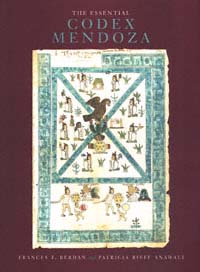 | Title: The Codex Mendoza Author: Berdan, Frances Published: University of California Press, 1992 Subjects: Anthropology | Cultural Anthropology | Latin American Studies | Native American Studies | Latin American History | Art Publisher's Description: This book is available in two editions: a four-volume deluxe hardcover edition and a single-volume paperback abridgment. The four-volume hardcover facsimile edition of Codex Mendoza places the most comprehensive, most extensively illustrated document of Aztec civilization within reach of a broad audience. Compiled in Mexico City around 1541 under the supervision of Spanish clerics, the Codex was intended to inform King Charles V about his newly conquered subjects. The manuscript contains pictorial accounts of Aztec emperors' conquests and tribute paid by the conquered, as well as a remarkable ethnographic record of Aztec daily life from cradle to grave. This four-volume publication is an unsurpassed source of information about Aztec history, geography, economy, social and political organization, glyphic writing, costumes, textiles, military attire, and indigenous art styles.Volume 1 contains interpretive essays by the authors and other leading specialists on every aspect of Codex Mendoza . Volume 2 offers a thorough description and discussion of each pictorial page, and Volume 3 is a complete color facsimile of the manuscript itself. Volume 4, a parallel image volume, is the most innovative and in some ways the most useful of the four. It provides an exact duplicate in black and white of the facsimile Volume 3, with the sixteenth-century Spanish text transcribed and then translated into English. In addition, all the glosses are translated and positioned exactly as on the original pictorial pages. The extensive and useful appendices add such things as pictorial charts of costumes and textiles, translations and discussions of all the glyphs in the codex, and a table of comparative chronologies.In making this extraordinary sixteenth-century work accessible (the original manuscript resides in the Bodleian Library, Oxford, England), the authors have performed an invaluable service to Mesoamerican scholars and all those interested in pre-Columbian peoples. The abridged paperback edition comprises volumes two and four of the hardcover, augmented by sixteen color images from volume 3. [brief] Similar Items |
| 44. | 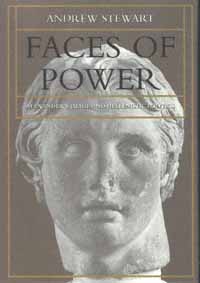 | Title: Faces of power: Alexander's image and Hellenistic politics Author: Stewart, Andrew F Published: University of California Press, 1994 Subjects: Art | Art and Architecture Publisher's Description: Alexander the Great changed the face of the ancient world. During his life and after his death, his image in works of art exerted an unprecedented influence?on marbles, bronzes, ivories, frescoes, mosaics, coins, medals, even painted pottery and reliefware. Alexander's physiognomy became the most famous in history. But can we really know what meaning lies behind these images?Andrew Stewart demonstrates that these portraits - wildly divergent in character, quality, type, provenance, date, and purpose - actually transmit not so much a likeness of Alexander as a set of carefully crafted clichés that mobilize the notion "Alexander" for diverse ends and diverse audiences. Stewart discusses the portraits as studies in power and his original interpretation of them gives unprecedented fullness and shape to the idea and image called "Alexander." [brief] Similar Items |
| 45. | 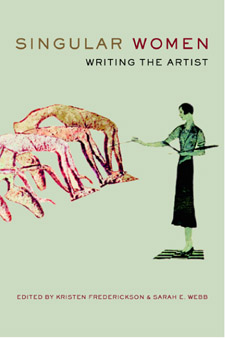 | Title: Singular women: writing the artist Author: Frederickson, Kristen 1965- Published: University of California Press, 2003 Subjects: Art | Art History | Art Criticism | Art Theory | Women's Studies Publisher's Description: In this groundbreaking volume, contemporary art historians - all of them women - probe the dilemmas and complexities of writing about the woman artist, past and present. Singular Women proposes a new feminist investigation of the history of art by considering how a historian's theoretical approach affects the way in which research progresses and stories are told. These thirteen essays on specific artists, from the Renaissance to the present day, address their work and history to examine how each has been inserted into or left out of the history of art. The authors go beyond an analysis of the past to propose new strategies for considering the contributions of women to the visual arts, strategies that take into account the idiosyncratic, personal, and limited rhetoric that confines all writers. [brief] Similar Items |
| 46. | 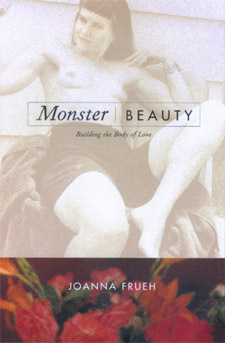 | Title: Monster/beauty: building the body of love Author: Frueh, Joanna Published: University of California Press, 2001 Subjects: Art | Art Theory | Gender Studies | Art Theory | Gender Studies Publisher's Description: This daring, intensely personal book challenges both conventional and feminist ideas about beauty by asking us to take pleasure in beauty without shame, and to see and feel the erotic in everyday life. Bringing together her varied experiences as a poet, art historian, bodybuilder, and noted performance artist, Joanna Frueh shows us how to move beyond society's equation of youth with beauty toward an aesthetic for the fully erotic human being. A lush combination of autobiography, theory, photography, and poetry, this book continues to develop the ideas about the erotic, beauty, older women, sex, and pleasure that Frueh first addressed in Erotic Faculties. Monster/Beauty examines these issues using a provocative, often explicit, set of examples. Frueh admiringly looks at the bodies and mindsets of midlife female bodybuilders, rethinks the vampire, and revises our ideas about traditional models of beauty, such as Aphrodite. Above all, she boldly brings her personal experience into the text, weaving her reflections on female sensuality with contemporary theory. These linked essays are as much a performance as they are a discussion, breaking down the barriers between the personal and the academic, and the erotic and the intellectual. Frueh writes passionately and beautifully, and the result is a much-needed exploration of beauty myths and taboos. [brief] Similar Items |
| 47. | 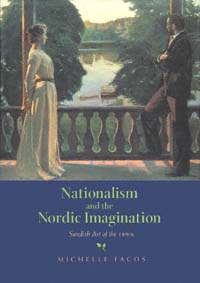 | Title: Nationalism and the Nordic imagination: Swedish art of the 1890s Author: Facos, Michelle Published: University of California Press, 1998 Subjects: Art | Art History | European Studies Publisher's Description: This richly illustrated book is a lucid introduction to a largely neglected manifestation of Modernism that came out of fin-de-siècle Sweden. Michelle Facos presents the first study in English to seriously examine the movement known as Swedish National Romanticism. Her work is especially valuable in showing how the movement's primitivist tendencies were related to, but different from, similar cultural forces in Germany and other parts of Europe at that time. Facos shows how a small group of Swedish artists espoused a politically progressive, culturally conservative form of nationalism. These artists - among them Carl Larsson, Bruno Liljefors, and Hanna Hirsch Pauli - produced a specifically national Swedish art by focusing on indigenous history, legends, and folk tales as well as uniquely Swedish-Nordic values, geography, and ethnography. Their breathtaking images of the Nordic landscape shaped a communal "Folk" identity that accented regionalism, solidarity, and attachment to the past and protested against the perceived dangers of capitalist industrialism and urban expansion. By 1900 Sweden was on its way to realizing a society of social, economic, and political equality, and the National Romantic painters were no longer renegades. Facos's portrayal of their movement will attract readers in the arts, historians, folklorists, cultural anthropologists, and sociologists. [brief] Similar Items |
| 48. | 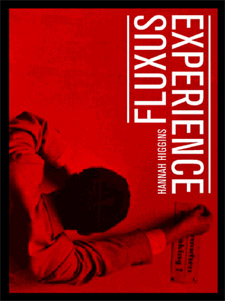 | Title: Fluxus experience Author: Higgins, Hannah 1964- Published: University of California Press, 2002 Subjects: Art | Art History | Art Theory | Art Criticism Publisher's Description: In this groundbreaking work of incisive scholarship and analysis, Hannah Higgins explores the influential art movement Fluxus. Daring, disparate, contentious - Fluxus artists worked with minimal and prosaic materials now familiar in post-World War II art. Higgins describes the experience of Fluxus for viewers, even experiences resembling sensory assaults, as affirming transactions between self and world. Fluxus began in the 1950s with artists from around the world who favored no single style or medium but displayed an inclination to experiment. Two formats are unique to Fluxus: a type of performance art called the Event, and the Fluxkit multiple, a collection of everyday objects or inexpensive printed cards collected in a box that viewers explore privately. Higgins examines these two setups to bring to life the Fluxus experience, how it works, and how and why it's important. She does so by moving out from the art itself in what she describes as a series of concentric circles: to the artists who create Fluxus, to the creative movements related to Fluxus (and critics' and curators' perceptions and reception of them), to the lessons of Fluxus art for pedagogy in general. Although it was commonly associated with political and cultural activism in the 1960s, Fluxus struggled against being pigeonholed in these too-prescriptive and narrow terms. Higgins, the daughter of the Fluxus artists Alison Knowles and Dick Higgins, makes the most of her personal connection to the movement by sharing her firsthand experience, bringing an astounding immediacy to her writing and a palpable commitment to shedding light on what Fluxus is and why it matters. [brief] Similar Items |
| 49. |  | Title: Symbolist art theories: a critical anthology Author: Dorra, Henri 1924- Published: University of California Press, 1995 Subjects: Art | Art History | Art Theory | Art Criticism Publisher's Description: Henri Dorra, in his comprehensive new book, presents the development and the aesthetic theories of the symbolist movement in art and literature. Included are writings (many never before translated or reprinted) by artists, designers, architects, and critics, along with Dorra's learned commentary. Fifty photographs of symbolist works complement his encyclopedic coverage.Dorra traces symbolism and its roots from artist to artist and critic to critic from the 1860s to the early twentieth century. The decorative arts and architecture are examined as well as painting and sculpture. The Arts and Crafts movement, art nouveau, the work of Eiffel in France and Sullivan in the United States are all well represented.The close relations between symbolist poets and artists are reflected in the chapter on literary developments. Baudelaire, Rimbaud, Verlaine, and Mallarmé are here, but so, too, are writers less well-known. A section on the Post-Impressionists and the "Artists of the Soul" rounds out Dorra's rich and varied text, and his epilogue lays the groundwork for what was to follow symbolism.Dorra beautifully integrates the different aesthetic branches of symbolism, the different media and national variations, without ever losing sight of the whole. The historical context provided makes this a particularly appealing collection for students and scholars of art history and literature, as well as for anyone interested in the evolution of symbolism. [brief] Similar Items |
| 50. | 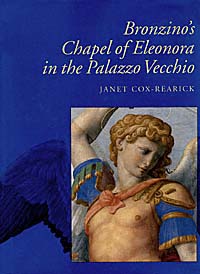 | Title: Bronzino's Chapel of Eleonora in the Palazzo Vecchio Author: Cox-Rearick, Janet Published: University of California Press, 1993 Subjects: Art | Art History Publisher's Description: Do the sacred decorations of a Florentine Renaissance chapel - saints, symbols, and scriptural stories - hold personal and political meanings? Cox-Rearick's ground-breaking book explores the message hidden in the frescoes and altar panels of the Chapel of Eleonora di Toledo, painted in the early 1540s by Agnolo Bronzino for the Spanish-born wife of Duke Cosimo I de Medici. Bronzino, then the chief painter to the Medici court, was largely responsible for the invention in Florence of the highly self-conscious, elegant Maniera style. Cox-Rearick interweaves her account of the Medici biography with an examination of Bronzino's commission in the broader context of his oeuvre.Cox-Rearick reveals the Chapel of Eleonora as an intimately devised decorative program that transmits messages about its patrons and Medici rule. Detailed color photographs of the newly restored art splendidly document this early tour de force of a major artist whose works are still relatively unexamined. [brief] Similar Items |
| 51. | 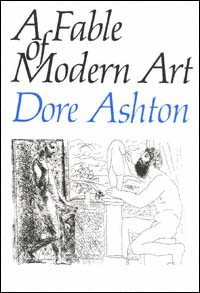 | Title: A fable of modern art Author: Ashton, Dore Published: University of California Press, 1991 Subjects: Art | Art History | Art Theory | Intellectual History Publisher's Description: Dore Ashton's masterly analysis of modern art grows out of a consideration of Balzac's brilliant and little known 'philosophic' story The Unknown Masterpiece in which the concerns of Cézanne, Picasso, and the abstract expressionists are strikingly prefigured. Balzac's fable is discussed not only within the context from which it emerged - early nineteenth-century romanticism - but also in its embodiment of various attitudes towards art. Ashton illuminates a web of associations linking Balzac to Cézanne, Rilke, Schoenberg, Kandinsky and Picasso as they struggle with the yearning to express the inexpressible, to make concrete the abstract.As Professor Ashton develops the conjectures of her book she reveals the interrelations of literature, music, and art and the basic problems which engage or beset the contemporary artist and those who seek to understand and appreciate contemporary art. This is a book of extreme originality which ranges so widely and offers such valuable insights that it forms an important contribution not only to the history of art and culture, but also to the history of ideas. [brief] Similar Items |
| 52. | 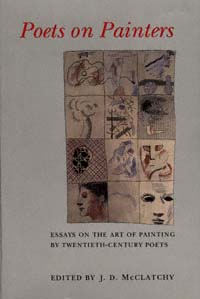 | Title: Poets on painters: essays on the art of painting by Twentieth-century poets Author: McClatchy, J. D 1945- Published: University of California Press, 1989 Subjects: Literature | Art | Poetry | Art History Publisher's Description: What are poets looking at , looking for , when they walk into a room of pictures? Poets on Painters attempts to answer this question by bringing together, for the first time, essays by modern American and British poets about painting. The poets bring to their task a fresh eye and a freshened languag . . . [more] Similar Items |
| 53. | 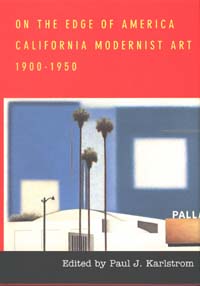 | Title: On the edge of America: California modernist art, 1900-1950 Author: Karlstrom, Paul J Published: University of California Press, 1996 Subjects: Art | Art History | California and the West | United States History | Californian and Western History Publisher's Description: To many, California's social and cultural identity has set it apart from the rest of the nation. Identified almost exclusively with Hollywood and popular culture, the entire region has been denied a meaningful relationship to mainstream twentieth-century modernism. This groundbreaking collection emphatically challenges that assumption. In essays about California art during the first half of the century, the contributors evoke a culture, now recognizable as modernist, that reflects the actual circumstances of contemporary West Coast artistic experience in all its richness. The subjects include painting, murals, sculpture, film, photography, and architecture.The issue of regionalism is central to this remarkable collection. How do we build a cultural portrait of an area that reveals its distinctive character while recognizing its participation in the larger art historical framework? Through the essays runs the theme of an alternative culture that transformed modernism to suit its own regional imperatives. Compelled by a sense of distance and the need for reinvention, California artists created traditions for a new cultural landscape and society. On the Edge of America is an enlightening and visually exciting addition to the growing literature on California art and culture. Through its fresh and expanded view of modernism, it is also well suited to the formulation of a truly national cultural narrative, one that embraces the edges as well as the center of American creative life. [brief] Similar Items |
| 54. | 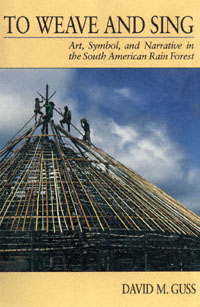 | Title: To weave and sing: art, symbol, and narrative in the South American rainforest Author: Guss, David M Published: University of California Press, 1990 Subjects: Anthropology | Cultural Anthropology | Art | Latin American Studies Publisher's Description: To Weave and Sing is the first in-depth analysis of the rich spiritual and artistic traditions of the Carib-speaking Yekuana Indians of Venezuela, who live in the dense rain forest of the upper Orinoco. Within their homeland of Ihuruna, the Yekuana have succeeded in maintaining the integrity and unity of their culture, resisting the devastating effects of acculturation that have befallen so many neighboring groups. Yet their success must be attributed to more than natural barriers of rapids and waterfalls, to more than lack of "contact" with our "modern" world. The ethnographic history recounted here includes not only the Spanish discovery of the Yekuana but detailed indigenous accounts of the entire history of Yekuana contact with Western culture, revealing an adaptive technique of mythopoesis by which the symbols of a new and hostile European ideology have been consistently defused through their incorporation into traditional indigenous structures.The author's initial point of departure is the Watunna , the Yekuana creation epic, but he finds his principal entrance into this mythic world through basketry, focusing on the eleborate kinetic designs of the round waja baskets and the stories told about them. Guss argues that the problem of understanding Yekuana basketry is the problem of understanding all traditional art forms within a tribal context, and critiques the cultural assumptions inherent in our systems of classification. He demonstrates that the symbols woven into the baskets function not in isolation but collectively, as a powerful system cutting across the entire culture. To Weave and Sing addresses all Yekuana material culture and the greater reality it both incorporates and masks, discerning a unifying configuration of symbols in chapters on architectural forms, the geography of the body, and the use of herbs, face paints, and chants. A narrow view of slash-and-burn gardens as places of mere subsistence is challenged by Guss's portrait of these exclusively female spaces as systematic inversions of the male world, "the sacred turned on its head." Throughout, a wealth of narrative and ritual materials provides us with the closest approximation we have to a native exegesis of these phenomena. What we are offered here is a new Poetics of Culture, ethnography not as a static given but as a series of shifting fields, wherein culture (and our image of it) is constantly recreated in all of its parts, by all of its members. [brief] Similar Items |
| 55. | 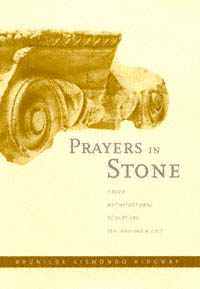 | Title: Prayers in stone: Greek architectural sculpture ca. 600-100 B.C.E Author: Ridgway, Brunilde Sismondo 1929- Published: University of California Press, 1999 Subjects: Classics | Art | Art and Architecture | Art History Publisher's Description: The meaning of architectural sculpture is essential to our understanding of ancient Greek culture. The embellishment of buildings was common for the ancient Greeks, and often provocative. Some ornamental sculpture was placed where, when the building was finished, no mortal eye could view it. And unlike much architectural ornamentation of other cultures, Greek sculpture was often integral to the building, not just as decoration, and could not be removed without affecting the integrity of the building structure. This book is the first comprehensive treatment of the significance of Greek architectural sculpture. Brunilde Sismondo Ridgway, a world-class authority on ancient Greek sculpture, provides a highly informative tour of many dimensions of Greek public buildings - especially temples, tombs, and treasuries - in a text that is at once lucid, accessible, and authoritative.Ridgway's pragmatism and common sense steer us tactfully and clearly through thickets of uncertainty and scholarly disagreement. She refers to a huge number of monuments, and documents her discussions with copious and up-to-date bibliographies. This book is sure to be acknowledged at once as the standard treatment of its important topic. [brief] Similar Items |
| 56. | 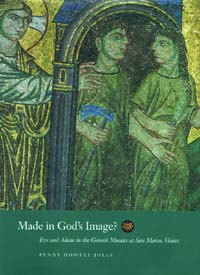 | Title: Made in God's image?: Eve and Adam in the Genesis mosaics at San Marco, Venice Author: Jolly, Penny Howell Published: University of California Press, 1997 Subjects: Art | Art History | Medieval Studies | Women's Studies | Religion Publisher's Description: The stunning mosaics that illustrate the story of Creation in the church of San Marco in Venice are the focus of Penny Howell Jolly's compelling and provocative book. Scholars of medieval art have long been interested in the Genesis mosaics because they copy a nearly destroyed fifth-century illuminated Greek manuscript known as the Cotton Genesis. But instead of seeing the mosaics as a vehicle for reconstructing a lost cycle of paintings, Jolly presents them as a social document revealing the essential misogyny that existed in thirteenth-century Venice. Jolly analyzes more than twenty scenes, one by one in narrative order, and her perceptive reading goes well beyond what the Genesis Vulgate text says about Eve and Adam. The mosaics establish Eve as the culpable character from the very moment of her Creation, says Jolly, and depict her as dangerous and unrepentant at the end. Incorporating both feminist religious and narratological studies, Jolly poses important questions on the nature of visual language as opposed to verbal language. The very ability of visual forms to recall a rich variety of references is one source of their power, and propaganda must have enough breadth of reference to be read by diverse groups. The San Marco cupola, Jolly maintains, is dealing in powerful propaganda, and her pictorial observations offer an articulate and refreshing new view of this well-known work. [brief] Similar Items |
| 57. | 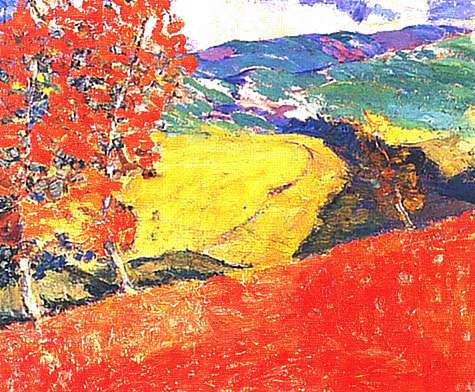 | Title: The Society of Six: California colorists Author: Boas, Nancy 1934- Published: University of California Press, 1997 Subjects: Art | Art History | California and the West | Californian and Western History Publisher's Description: Six plein-air painters in Oakland, California, joined together in 1917 to form an association that lasted nearly fifteen years. The Society of Six - Selden Connor Gile, Maurice Logan, William H. Clapp, August F. Gay, Bernard von Eichman, and Louis Siegriest - created a color-centered modernist idiom that shocked establishment tastes but remains the most advanced painting of its era in Northern California. Nancy Boas's well-informed and sumptuously illustrated chronicle recognizes the importance of these six painters in the history of American Post-Impressionism.The Six found themselves in the position of an avant garde not because they set out to reject conventionality, but because they aspired to create their own indigenous modernism. While the artists were considered outsiders in their time, their work is now recognized as part of the vital and enduring lineage of American art. Depression hardship ended the Six's ascendancy, but their painterliness, use of color, and deep alliance with the land and the light became a beacon for postwar Northern California modern painters such as Richard Diebenkorn and Wayne Thiebaud. Combining biography and critical analysis, Nancy Boas offers a fitting tribute to the lives and exhilarating painting of the Society of Six. [brief] Similar Items |
| 58. | 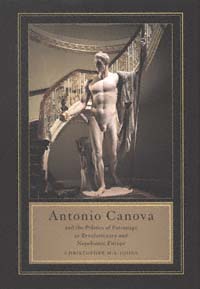 | Title: Antonia Canova and the politics of patronage in revolutionary and Napoleonic Europe Author: Johns, Christopher M. S Published: University of California Press, 1998 Subjects: Art | Art History | European Studies | European History Publisher's Description: The Venetian sculptor Antonio Canova (1757-1822) was Europe's most celebrated artist from the end of the ancien régime to the early years of the Restoration, an era when the traditional relationship between patrons and artists changed drastically. Christopher M. S. Johns's refreshingly original study explores a neglected facet of Canova's career: the effects of patrons, patronage, and politics on his choice of subjects and manner of working. While other artists produced art in the service of the state, Canova resisted the blandishments of the political powers that commissioned his works.Johns uses letters, diaries, and biographies to establish a political personality for Canova as an individual and an artist of international reputation. Though he had patrons as diverse as the pope, Napoleon, the Austrian Hapsburgs, the Prince Regent of Great Britain, and the Republic of Venice, Canova remained steadily employed and did so without controversy. A conservative and a Catholic, he devised a strategy that enabled him to work for patrons who were avowed enemies while remaining true to the cultural and artistic heritage of his Italian homeland. Using myth and funerary images and avoiding portraiture, he disguised the meanings behind his works and thus avoided their being identified with any political purpose.Johns greatly enhances our understanding of Canova's place in European art and political history, and in showing the influence of censorship, display, visual narrative, and propaganda, he highlights issues as contentious today as they were in Canova's time. [brief] Similar Items |
| 59. | 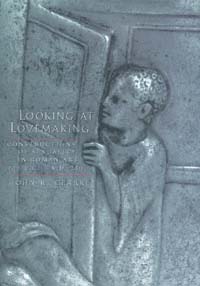 | Title: Looking at lovemaking: constructions of sexuality in Roman art, 100 B.C.-A.D. 250 Author: Clarke, John R 1945- Published: University of California Press, 1998 Subjects: Art | Classics | Art and Architecture | Art History | History | Gender Studies Publisher's Description: What did sex mean to the ancient Romans? In this lavishly illustrated study, John R. Clarke investigates a rich assortment of Roman erotic art to answer this question - and along the way, he reveals a society quite different from our own. Clarke reevaluates our understanding of Roman art and society in a study informed by recent gender and cultural studies, and focusing for the first time on attitudes toward the erotic among both the Roman non-elite and women. This splendid volume is the first study of erotic art and sexuality to set these works - many newly discovered and previously unpublished - in their ancient context and the first to define the differences between modern and ancient concepts of sexuality using clear visual evidence.Roman artists pictured a great range of human sexual activities - far beyond those mentioned in classical literature - including sex between men and women, men and men, women and women, men and boys, threesomes, foursomes, and more. Roman citizens paid artists to decorate expensive objects, such as silver and cameo glass, with scenes of lovemaking. Erotic works were created for and sold to a broad range of consumers, from the elite to the very poor, during a period spanning the first century B.C. through the mid-third century of our era. This erotic art was not hidden away, but was displayed proudly in homes as signs of wealth and luxury. In public spaces, artists often depicted outrageous sexual acrobatics to make people laugh. Looking at Lovemaking depicts a sophisticated, pre-Christian society that placed a high value on sexual pleasure and the art that represented it. Clarke shows how this culture evolved within religious, social, and legal frameworks that were vastly different from our own and contributes an original and controversial chapter to the history of human sexuality. [brief] Similar Items |
| 60. | 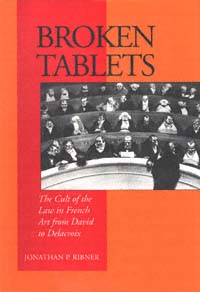 | Title: Broken tablets: the cult of the law in French art from David to Delacroix Author: Ribner, Jonathan P Published: University of California Press, 1993 Subjects: Art | Art History | French Studies | European Literature | European History | Law Publisher's Description: In this first study of art, law, and the legislator, Jonathan Ribner provides a revealing look at French art from 1789 to 1848, the period in which constitutional law was established in France. Drawing on several disciplines, he discusses how each of the early constitutional regimes in France used imagery suggesting the divine origin and sacred character of its laws.Primarily a study of art and politics, Broken Tablets discusses painting, sculpture, prints, and medals (many reproduced here for the first time), as well as contemporary literature, including the poetry of Alfred de Vigny, Alphonse de Lamartine, and Victor Hugo. Ribner assesses the ways in which legislation imagery became an instrument of political propaganda, and he clearly illuminates the cult of the law as it became personalized under Napoleon, monarchist under the Restoration, and defensive under Louis-Phillipe. [brief] Similar Items |